I decided to experiment with the recipe and added a hint of smoked paprika for a unique twist. It turned out fantastic!
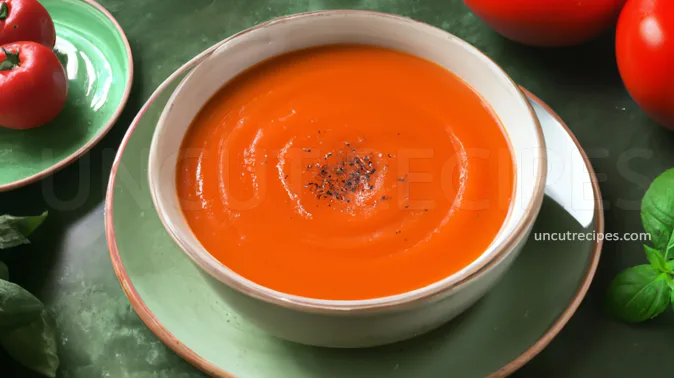
Picture yourself embarking on a culinary journey, backpacking through the verdant Italian countryside. You've been trekking all day, absorbing the stunning views of sun-kissed vineyards and rolling hills dotted with ancient olive groves. As the sun begins to set, painting the sky in hues of lavender and rose, you stumble upon a quaint village, the cobblestone streets echoing stories of yore.
At the heart of this hamlet, you find a charming rustic trattoria, a warm glow emanating from its windows. As you step inside, you're greeted by a cheery "Buonasera!" and the irresistible aroma of simmering tomatoes infused with fragrant basil and a hint of garlic.
They're cooking up a comforting, timeless recipe passed down through generations - the Simple Tomato Soup Recipe. This isn't just a recipe, but a time-honored tradition, a symbol of Italian hospitality and warmth. Each spoonful captures the essence of Italy and the love and care infused into its cooking.
But wait, you don't have to traverse the Italian countryside to enjoy this delightful treat. We're bringing this little slice of Italy to your kitchen! With fresh ingredients and simple, easy-to-follow steps, you'll recreate this culinary masterpiece, stirring your way to a rich and velvety soup that encapsulates an Italian adventure.
So, put on some Italian opera, tie that apron, and let's get cooking. This isn't just about making soup - it's about embarking on an Italian escapade, one delicious spoonful at a time. Buon Appetito!
JUMP TO:
INGREDIENTS:
Whole Peeled Tomatoes: Tomatoes form the backbone of your soup, so choosing high-quality ones is crucial. For this recipe, we suggest canned whole peeled tomatoes because they are generally picked and canned at peak ripeness, which means they retain more flavor than fresh tomatoes, especially outside the peak tomato season. However, if you're cooking in late summer and have access to ripe, fresh tomatoes, feel free to use those instead. If you are using canned tomatoes, opt for a brand that uses San Marzano tomatoes - they are renowned for their sweet flavor and low acidity.
Olive Oil and Unsalted Butter: These fats help in sautéing the onions and garlic, and they bring a distinct flavor. Opt for extra virgin olive oil for the best taste, as it also brings a host of antioxidants to the table. When it comes to butter, go for unsalted as this lets you control the salt level in your soup.
Sugar: Sugar is used in a tiny quantity to balance the acidity of the tomatoes. Opt for organic cane sugar if possible. If you want to make this recipe healthier, you could use a natural sweetener like stevia or erythritol, but remember that each sweetener has its unique flavor profile.
Spices (Celery Seed, Red Pepper Flakes, Dried Oregano): They are the silent heroes of your soup. Ensure your spices are fresh - if they've been sitting on your shelf for years, they've likely lost much of their potency. Always store them in a cool, dark place for maximum shelf life.
MAIN STEPS:
The Sauté Step (Step 2): Cooking your onions and garlic just right is essential for a flavorful base. Make sure not to rush this step. The onions should become translucent but not brown. If they brown, they may give a slightly bitter taste to your soup.
Boiling and Simmering (Steps 4 and 5): The transition from boiling to simmering needs a little attention. Once your soup reaches a boil, lower the heat to maintain a gentle simmer. This is crucial as a high boil can cause the tomatoes to break down too much, affecting the soup's texture.
Blending the Soup (Step 7): This step will transform your soup from a chunky mix into a velvety smooth bowl of deliciousness. However, you must be very careful when blending hot soup. If possible, let the soup cool down a bit before you begin blending. Also, don't fill the blender all the way, and hold the lid down firmly with a kitchen towel to avoid any hot soup splashing out.
Reheating (Step 8): After blending, you need to reheat your soup, but make sure not to let it reach a boil again. A gentle simmer is enough to warm the soup while maintaining its smooth texture and robust flavors.
Seasoning (Step 9): Seasoning your soup with salt and pepper is the final, crucial step. It's always better to under-season during the cooking process because you can add, but can't subtract. Taste your soup after it's heated and adjust the seasoning as needed.
SERVED WITH:
Starter: Caprese Salad (Italy): This is a simple and fresh salad made from sliced fresh mozzarella, tomatoes, and sweet basil, seasoned with salt, olive oil, and optionally balsamic reduction. The flavors of this salad mirror those in the tomato soup, making it a perfect starter.
Side Dish: Grilled Cheese Sandwich (USA): This is a classic pairing with tomato soup. The sandwich is typically made from slices of bread and cheese, which are then grilled until the cheese is melted and the bread is toasted. The crispy, cheesy sandwich provides a great textural contrast to the smooth soup.
Main Course: Spaghetti Carbonara (Italy): This is a classic Italian dish made from eggs, cheese, pancetta, and pepper. The creamy and rich flavors of this pasta dish will nicely contrast with the acidity of the tomato soup.
Second Course: Ratatouille (France): A traditional French Provençal stewed vegetable dish, originating in Nice. The full-bodied, earthy flavors of this vegetable medley would provide a good counterpoint to the tomato soup.
Dessert: Tarte Tatin (France): A caramelized upside-down apple tart. Its sweet, buttery caramel and soft apples make a delightful ending to a meal that started with the savory tomato soup.
Cake: Lemon Drizzle Cake (United Kingdom): This is a light, moist lemon cake with a crisp, sugary glaze. The citrus notes of the cake will complement the acidity of the tomato soup, providing a refreshing finish to the meal.
Drink: Chianti (Italy): This red wine from Tuscany pairs well with tomato-based dishes, including tomato soup. Its fruity undertones and slight acidity match the soup's flavor profile.
ALTERNATIVES:
Main Dish: Shakshuka (Tunisia): A rich and spicy stew made from tomatoes, onions, peppers, and spices. Eggs are cracked into the sauce to poach just before serving. It's a beloved breakfast dish in many parts of the Middle East and North Africa.
Side Dish: Bruschetta (Italy): A simple and traditional Italian appetizer consisting of grilled bread rubbed with garlic and topped with diced tomatoes, fresh basil, and often mozzarella. The flavors are similar to tomato soup but presented in a crispy, chewy package.
Main Course: Gazpacho (Spain): A cold soup made of raw, blended vegetables, usually with a tomato base. Originating in the southern Spanish region of Andalucia, this refreshing dish is perfect for hot summer days.
Main Dish: Tomato and Basil Pasta (Italy): A classic Italian dish, simple and full of flavor. Fresh tomatoes and basil are tossed with pasta, olive oil, and garlic for a quick and satisfying meal.
Dessert: Tomato Sorbet (France): An unusual yet delightful choice. Tomato sorbet combines sweet and tangy flavors, often served as a palate cleanser between meals in French cuisine.
HISTORY:
The exact origin of the tomato soup is difficult to trace, as tomatoes and soups have both been integral parts of cuisines around the world for centuries. The story of the tomato soup as we know it today, however, is closely tied to the journey of the tomato itself and the advent of canned foods.
Tomatoes originated in the Andes in South America and were first domesticated by the Aztecs and other Mesoamerican peoples. Spanish explorers brought tomatoes to Europe in the 16th century, but for many years they were seen as ornamental plants, or even believed to be poisonous, due to their membership in the nightshade family.
As tomatoes slowly gained acceptance as food in Europe and the United States, they began to feature in soups, among other dishes. However, the tomato soup's leap to fame came in the 19th century with the rise of industrial canning.
Joseph Campbell, a fruit merchant, and Abraham Anderson, an icebox manufacturer, founded the Joseph Campbell Preserve Company in 1869, which would later become the Campbell Soup Company we know today. In 1897, Dr. John T. Dorrance, a chemist working at Campbell's, invented a method of condensing soup, allowing it to be packaged into smaller cans, which were easier and cheaper to ship. Tomato soup was among the first products that Campbell's launched using this new method, and it quickly became a bestseller. The combination of convenience, affordability, and taste made it an instant classic in American households.
In terms of cultural significance, tomato soup is often associated with comfort and home. It's a staple in many American kitchens, especially paired with a grilled cheese sandwich, a combination that became popular in the 1960s and is still loved today.
Over the years, variations of tomato soup have appeared in different cuisines. In Spain, for instance, the chilled tomato soup Gazpacho is a classic summer dish. Tomato soup remains a simple yet versatile dish, easily adapted to suit different tastes and dietary requirements.
As of today, tomato soup continues to be enjoyed globally. Whether as a canned soup or a gourmet dish in high-end restaurants, its rich, comforting flavors and easy preparation ensure its continued popularity.
TIPS:
Sweating the onions and garlic: Sweating is a technique where vegetables are cooked gently on low heat until they become tender and translucent, not browned. This helps to release their flavor into the oil and butter without imparting a burnt or bitter taste. When sweating the onions and garlic for this soup, make sure to stir them occasionally to prevent browning and encourage even cooking.
Use quality canned tomatoes: In this case, using whole peeled tomatoes can provide a deeper, richer flavor than diced or chopped tomatoes. You could also consider using San Marzano tomatoes, renowned for their sweet flavor and low acidity, making them perfect for tomato soup.
Season in stages: Seasoning the soup in stages is a technique that builds depth of flavor. Add a bit of salt and pepper when you add the tomatoes, and then adjust the seasoning at the end after the soup has simmered and the flavors have melded together. This will give you better control over the final taste.
Simmering: Simmering the soup allows the flavors to blend together. Avoid boiling as it can make the soup taste harsh and can cause it to splatter. A gentle simmer will help you achieve a better texture and flavor.
Recipe Information
Skill Level
|
Time 30 Minutes |
Price
|
Serves 4 People |
| Healthiness |
Nutritional Information |
| Ratings (Add Rating & Review) |
Reviews 19 Reviews |
Ingredients:
-
1 and 1/3 cans Whole Peeled Tomatoes
2/3 cup Water
2/3 Onion
( thinly sliced )
2/3 tablespoon Olive Oil
2/3 tablespoon Unsalted Butter
( or margarine )
2/3 tablespoon Sugar
1 and 1/3 large Garlic cloves
( peeled and crushed )
A pinch of Celery Seed
( less than 1/6 of a teaspoon )
A pinch of Red Pepper Flakes
A pinch of dried Oregano
( less than 1/6 of a teaspoon )
Salt
( to taste )
Ground Black Pepper
( to taste )
Allergens
| Dairy | Sulphites |
Directions:
01 - Start by placing your Butter and Olive Oil into a large saucepan over medium-low heat. This is going to create a savory base for our soup.
02 - Next, add your Onion and Garlic to the saucepan. Cook these until the Onion becomes soft and has a transparent appearance. This should take about 5 minutes. Don't worry if you've never done this before - keep an eye on your onions and look for a change in their texture.
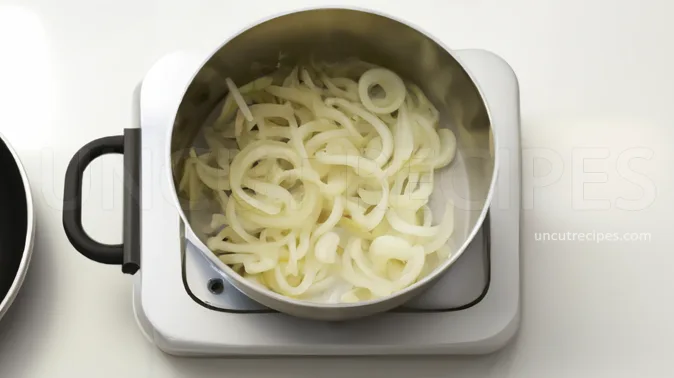
03 - Now, it's time to mix everything together. Add Tomatoes, Water, Sugar, Celery Seed, Oregano, Red Pepper Flakes, Salt, and Black Pepper to the saucepan. Stir everything together until well combined.
04 - You're doing great! Now, we need to heat up the Soup. Increase the heat until your mixture starts to boil. You'll notice little bubbles surfacing - that's what we're looking for!
05 - Once you've got the mixture boiling, turn down the heat to low. Put the lid on your saucepan and let it simmer. Simmering is just a gentle boil, and it will help the flavors meld together. Do this for 15 minutes.
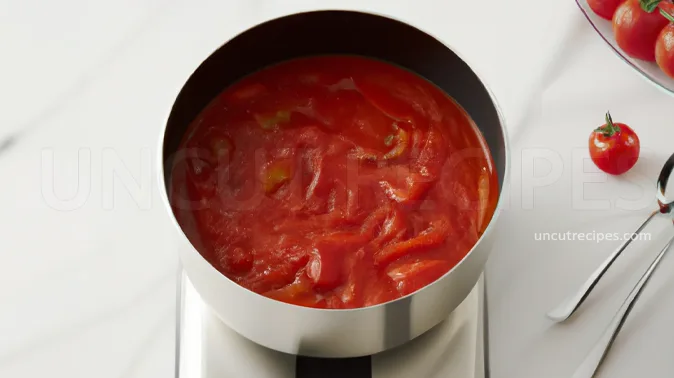
06 - After your Soup has had some time to simmer, carefully remove the saucepan from the heat. Remember, it's hot, so use oven mitts or a dish towel to protect your hands!
07 - Now, get your immersion blender and carefully blend the mixture in the saucepan until it's smooth. This will make your soup creamy and velvety.
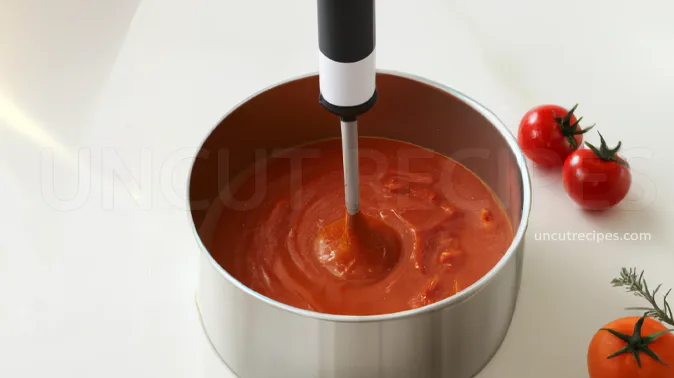
08 - You're almost there! Now we just need to heat up the Soup again before serving, but don't let it boil, we just want it warm.
09 - Finally, taste your masterpiece! Season with additional Salt and Pepper if you think it needs it and remember, it's always best to start with a little and add more if necessary.
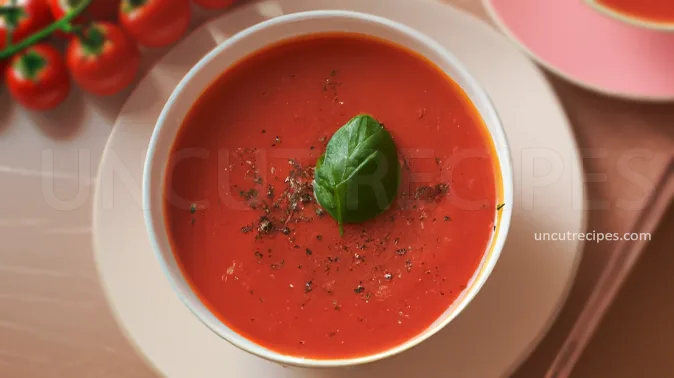
Notes:
Tomatoes: For the best flavor, use Italian San Marzano tomatoes. The quality and taste of the tomatoes significantly affect the soup's flavor. Whether fresh or canned, high-quality tomatoes can transform your soup. If fresh tomatoes aren't in season or readily available, look for high-quality canned San Marzano tomatoes.
Sauteing: Make sure to sauté the onion until it's truly soft and translucent before adding the other ingredients. This step is essential for developing the depth of flavor in the soup.
Vegan Option: If you or your guests are vegan, this soup can be made vegan-friendly by substituting the butter with margarine or an additional 2 tablespoons of olive oil.
Celery Seed: If celery seed is hard to find, substitute it with celery salt or a small amount of finely chopped fresh celery for a similar flavor profile. Just remember to adjust the amount of added salt if you use celery salt.
Reheating: When reheating the soup, ensure to do it over low heat to avoid the soup sticking to the pan and potentially burning.
Cream Addition: If desired, you can add cream to the soup. However, my family loves it as is, rich with the natural creaminess of the tomatoes.
Storing: This soup can be stored in an airtight container in the refrigerator for up to a week. If you want to store it longer, cool it completely before transferring it to freezer-safe containers to freeze.
Serving: This soup pairs beautifully with a crusty piece of bread or a grilled cheese sandwich for a comforting meal. For added flavor, consider topping it with a drizzle of cream, some fresh basil leaves, or a sprinkle of grated parmesan cheese.
Adjusting Thickness: If the soup is too thick for your liking, add a bit more water or some vegetable broth to thin it out. Conversely, if you'd like a thicker soup, let it simmer uncovered for a bit longer to allow some of the liquid to evaporate.
Nutritional Information
( Per Portion )
|
Calories |
140 kcal (7%) |
| Total Carbohydrate | 12g (4%) |
| Cholesterol | 8mg (3%) |
|
Total Fat |
10g (13%) |
| Saturated Fat | 3g (15%) |
| Polyunsaturated Fat | 1g |
| Monounsaturated Fat | 5g |
| Trans Fat | 0g |
| Fibers | 3g (12%) |
| Protein | 2g (4%) |
| Sugar | 7g (14%) |
|
Vitamin A |
1000 IU (20%) |
|
Vitamin B1 (Thiamin) |
0.1mg (8%) |
| Vitamin B2 (Riboflavin) | 0.02mg (2%) |
| Vitamin B3 (Niacin) | 1mg (6%) |
| Vitamin B5 (Pantothenic Acid) | 0.4mg (8%) |
| Vitamin B6 | 0.2mg (15%) |
| Vitamin B7 (Biotin) | 5mcg (17%) |
| Vitamin B9 (Folate) | 20mcg (5%) |
| Vitamin B12 | 0mcg (0%) |
| Vitamin C | 20mg (22%) |
| Vitamin D | 0 IU (0%) |
| Vitamin E | 2mg (13%) |
| Vitamin K | 15mcg (13%) |
| Choline | 20mg (4%) |
| Carnitine | 5mg |
|
Calcium |
50mg (4%) |
|
Chloride |
100mg (4%) |
| Chromium | 5mcg (14%) |
| Copper | 0.1mg (11%) |
| Fluoride | 0.01mcg (0%) |
| Iodine | 2mcg (1%) |
| Iron | 1mg (6%) |
| Magnesium | 30mg (7%) |
| Manganese | 0.2mg (9%) |
| Molybdenum | 10mcg (22%) |
| Phosphorus | 50mg (4%) |
| Potassium | 500mg (22%) |
| Selenium | 5mcg (9%) |
| Sodium | 500mg (22%) |
| Sulfur | 100mg |
| Zink | 0.5mg (5%) |
* Percent Daily Values are based on a 2,000 calorie diet. Your daily values may be higher or lower depending on your calorie needs.
** Nutrient information is available for all ingredients in this recipe. Amount is based on available nutrient data collected from all over the internet.
(-) Information is not currently available for this nutrient. If you are following a medically restrictive diet, please consult your doctor or registered dietitian before preparing this recipe for personal consumption. |
| Written by: Uncut Recipes | Disclaimer |






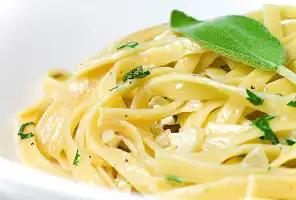



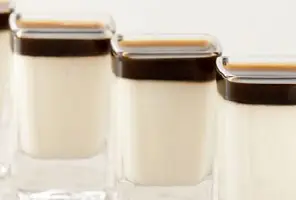
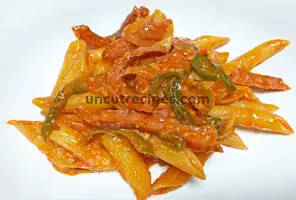






June 05, 2023
The second course was a delight. It received praise from everyone. Thank you for this lovely recipe.